Chapter 9 Laboratory 1: Thermodynamics and Energy in a Food Chain
9.1 Introduction
In your first 2-3 lectures in EESA01, you have learned about the scientific method, matter and energy, ecosystems, and the systems approach in environmental science. This laboratory exercise relates directly to these concepts. The main purposes of this laboratory exercise are for you to dissect a real owl pellet, to discern what the owl ate and how much of it, to use allometric (relating anatomy to body size) relationships to consider the energy intake of the owl over a particular period of time, and to become comfortable making simple calculations that relate to the conservation of energy and the transfer of energy in a food chain. The main learning objectives of this lab are to familiarize you with the systems approach and to be able to problem solve through calculations.
Owl pellets are masses of indigestible material usually consisting of bones, teeth, hair, and feathers. They are produced and regurgitated by many raptors, such as owls, which hunt and feed on other animals either swallowing them whole or in large pieces. Proteolytic enzymes as well as strong acids in the stomachs of owls dissolve soft parts of the prey. Owls’ relatively weak stomach muscles structure the undigested materials (bones, fur, feathers, etc.) into pellets. Throughout this process of pellet formation, most bones are preserved unbroken (even the most fragile ones). The narrow pyloric opening of the stomach into the intestine results in fine materials passing through into the intestine. Consequently, many of the bones are too large to pass through, and are incorporated into the pellet.
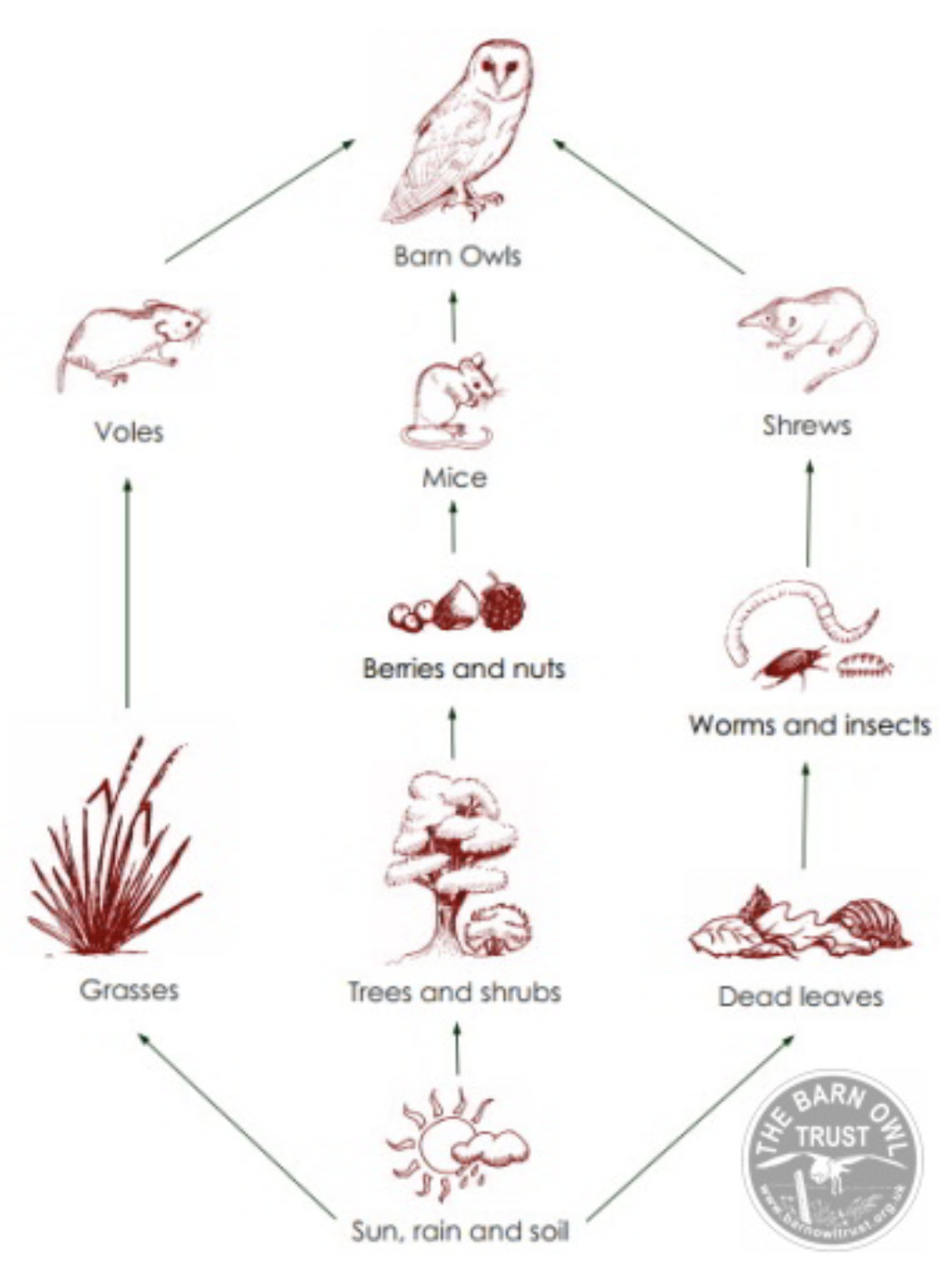
Figure 9.1: Foodweb of a barn owl
Consider the common barn owl, Tyto alba, as a system. What would be the inputs and outputs and how does energy transform within the “barn owl system”? For an animal, the necessity for life is its food, or prey—this is the material input, which also represents potential energy in the form of chemical energy within the chemical bonds that structure the prey. When the prey is ingested and digested, that chemical energy is transformed for use as kinetic energy (to help the owl fly, for example) and significant amounts of energy are lost as heat (thermal energy). The main output of the system is waste, in this case both feces (which we won’t deal with) and the production of an owl pellet (which we will examine). Consider that an animal has a basic energy threshold for functioning. If the inputs (food) into the system (the owl) are lower than the requirements over a period of time, it will starve. Conversely, if the inputs are greater than the requirements, it will grow. Thus, the governing factor in the owl’s life lies in the net energy balance of this system. Food is required as an input for the owl to function, grow, and release energy.
Owl pellets contain rodent or bird skulls and other bones, which can be identified using a taxonomic key. For this lab, we are interested in broad taxonomic identification only (e.g., shrew versus vole). You will be provided with appropriate taxonomic keys (pictures of bones) to help you identify the owl’s prey.
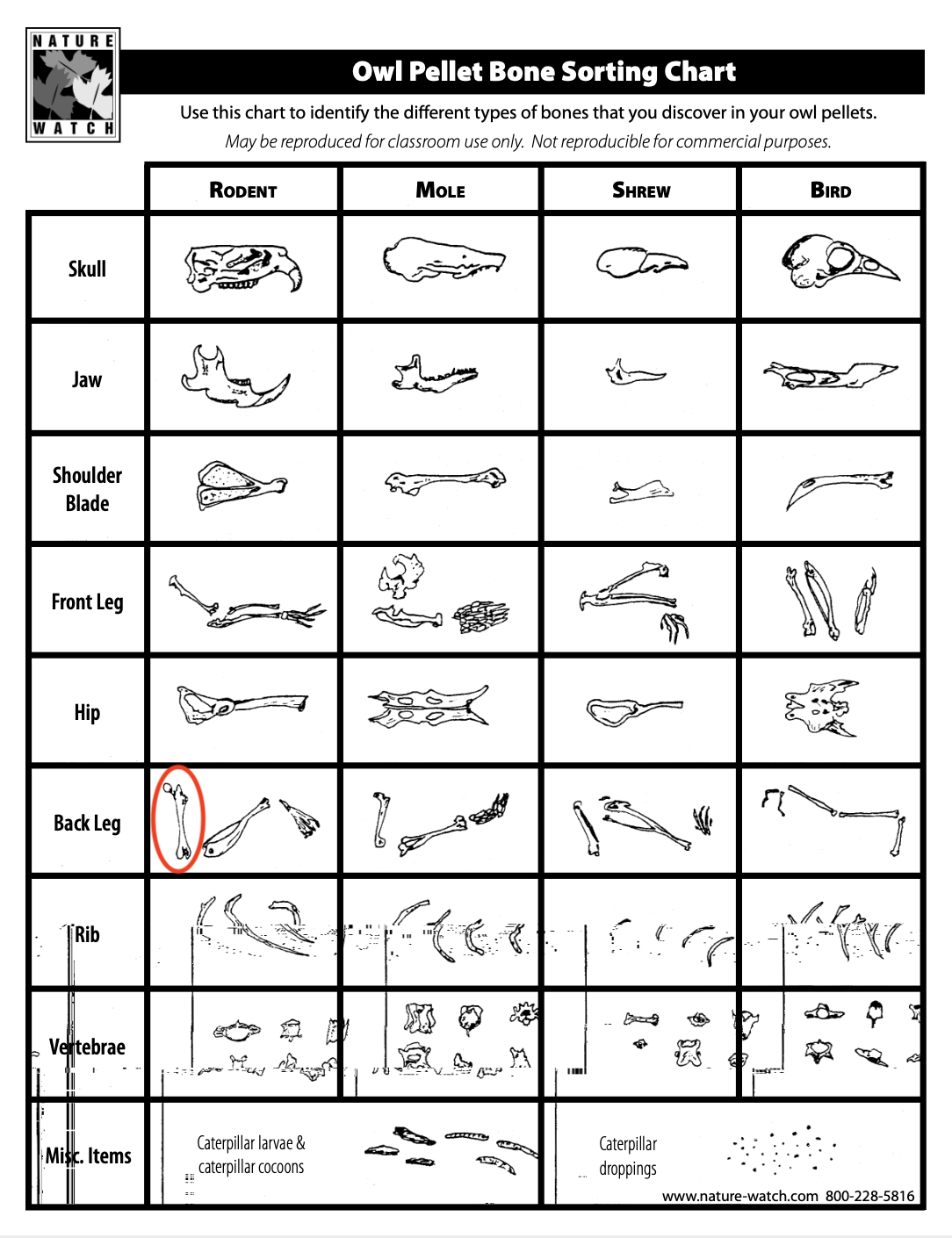
Figure 9.2: Bone sorting chart. Inside the red circle is a femur.
The caloric needs of an owl may be feasibly estimated by identifying the quantity and kinds of organisms eaten, as well as the caloric content provided by each prey animal. Typically, no more than 10% of high quality energy is transferred from one trophic level to another—the remainder is released to the owl’s surroundings as heat energy. The Second Law of Thermodynamics states that when energy is transformed, there is an increase in entropy or disorder, which this approximate 10% rule is in accordance with. According to the First Law of Thermodynamics, energy is conserved and not destroyed. However, a large amount of heat is produced that radiates out into space. A food calorie is a kilocalorie. Listed below are allometric relationships that link the mass of a particular bone (the femur, or upper leg bone) found in the owl’s prey with the corresponding kilocalorie supply of the animal that the bones belong to. Lower bone masses indicate a smaller animal, while higher bone masses indicate a larger animal. As such, the amount of energy provided is dependent upon the mass of the bone, as a larger animal will thus be a greater source of kilocalories.
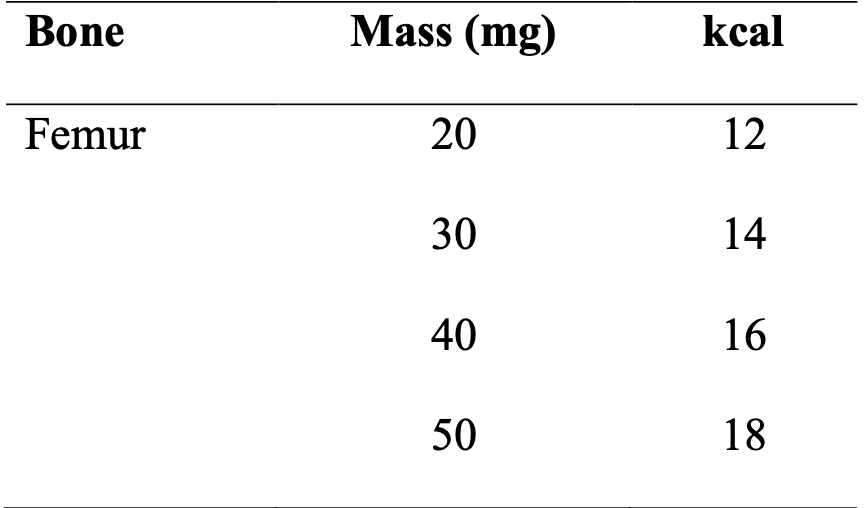
Figure 9.3: Allometric relationship between prey femur mass and kilocalorie values of individual prey. Every animal consumed will have two femurs (sometimes one is bitten off or “lost” somehow), but the table below refers to the mass of a single femur in relation to the overall kcal contained in that prey. When using this relationship, we suggest you gather all of your femurs, weigh them together and then divide by the number of femurs to arrive at an “average” kcal per prey animal present. The total number of animals present should relate to the number of femurs divided by 2. Round up if the total number of femurs is an odd number. With some luck, this should equal the number of skulls you find. If your mass falls outside the range listed in the table, extrapolate based on the very apparent pattern that exists.
9.2 Procedure for Laboratory 1
1. Obtain an owl pellet and unwrap it from its foil wrapping, then place it on your dissecting tray. Important note: it is VERY easy to crush and wreck the bones in the pellet; work slowly and diligently or your final mark will be affected!
Slowly, and very gently, crack the pellet apart with your fingers (it’s best to use your fingers as you have finer control than using tweezers)—ensure that you do not crush any bones, as this may affect how you will acquire your data.
Your “success” in completing this lab is at least partially tied to your ability to obtain full bones that can be used to accurately explore the allometric relationship between bone size and prey size. As you take the pellets apart, also try to remove feathers as they may skew the weight of the bones.
Continue working if you accidentally break or crush any bones. Make sure that you collect as many of the broken pieces as possible.
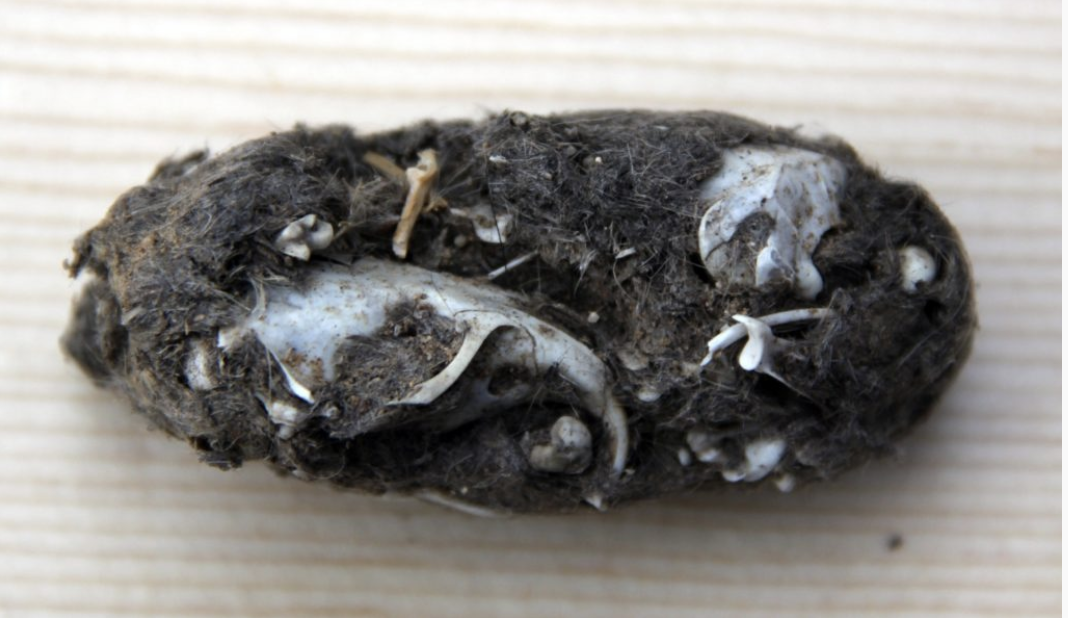
Figure 9.4: An owl pellet.
- Separate the skulls from the rest of the bones. Here, you can get an idea of what the owl ate through matching the skulls with the identification keys provided. Count the number of each prey animal according to the different number of skulls and record this number.
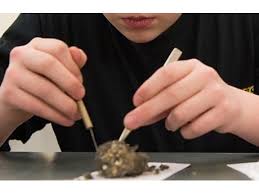
- Gather femur bones in relation to the number of skulls that you found (e.g., there should be two femur bones per skull, but sometimes one is “lost” somehow). Clean the femur bones to the best of your ability using your fingers to remove feathers, hair, or other particles (the owl pellets are sterilized, but still, don’t forget to wash your hands after). Count and weigh the femur bones (all together for better accuracy) using the balance in the lab and record this data in your notebook. Using this mass data and the allometric relationship in Figure 9.3, calculate the amount of kilocalories eaten by the owl in a night of foraging, assuming that the owl produces two pellets every night (i.e., simply multiply your findings for one pellet by 2).
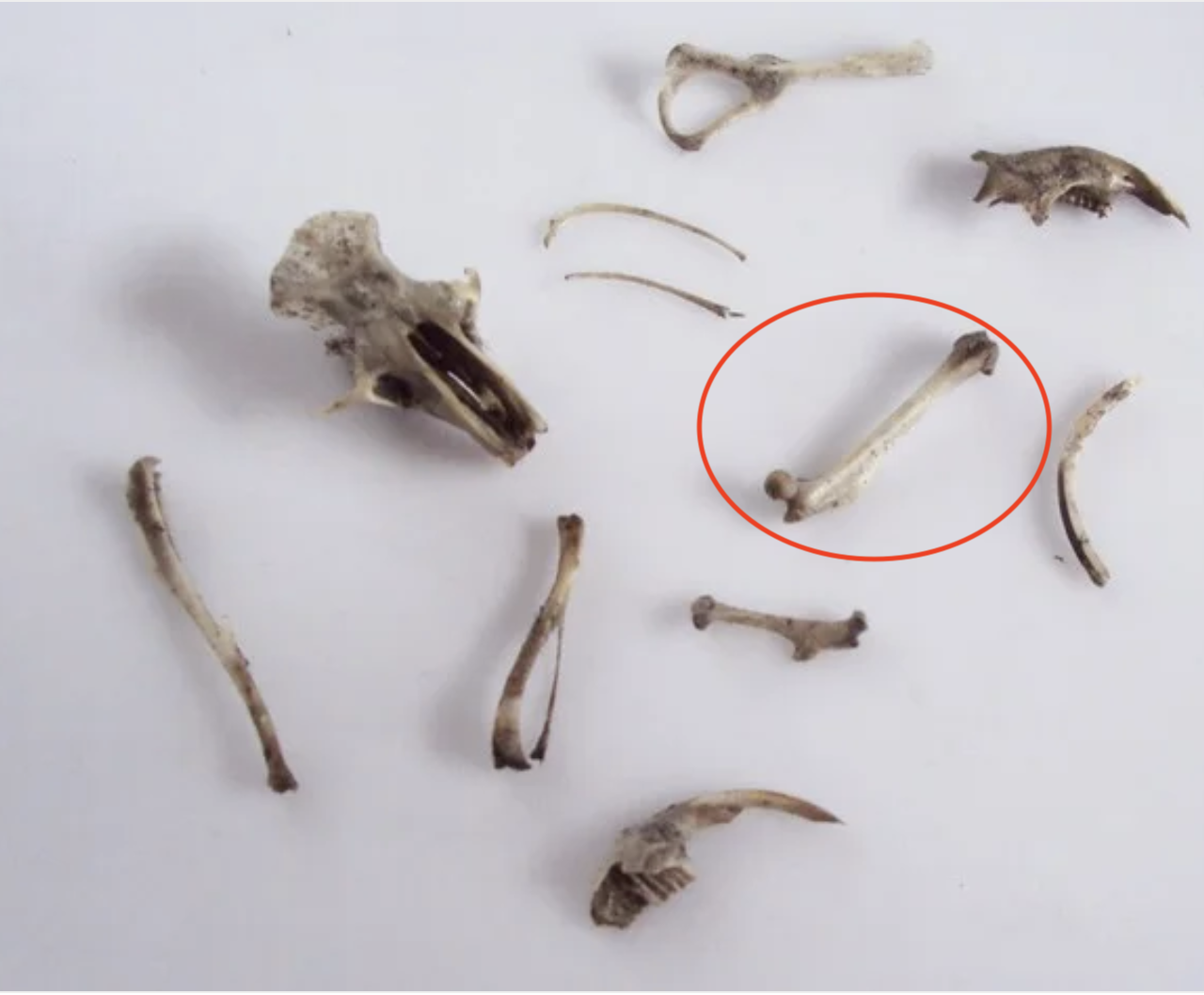
Figure 9.5: We are looking to weigh only the femur bones (inside the red circle)
Make sure you have finished the following before you exit the laboratory:
- You have a written account of what you have observed during the lab (description of prey, number of prey, etc…)
- You have written down the number of femurs that you weighed, the total mass of all your femurs, and the average mass of your femurs
- You have cleaned up your work area (ONLY hair, bones and aluminum foil goes inside the grabage cans. Please keep the trays, tweazers and identification chart)
9.3 Assignment #1
Assignment 1 is 22 marks total – worth 10% of your final grade.
Please type and print your lab 1 assignment. Your teaching assistant will not collect lab assignments that are handwritten. Your lab 1 assignment is due at the beginning of lab 2.
Marks are allocated towards the proper use of significant figures. Please refer to the “Lab 1 powerpoint” for more information.
You can also refer to Appendix (A.2) and Appendix (A.5) for more information about significant figures.
Briefly describe what you found in your pellet: How many animals were in your pellet? Were they all the same kind? Which kind of animal(s) did you find? (3 marks).
Calculate the total kcal intake of this owl in relation to the contents of your pellet (using your data and Figure 9.3), but assuming the owl produces 2 identical pellets per night. Show all your work/calculations. Again, remember that you are assuming that the owl produced 2 pellets that night; assume the second pellet was the exact same as the first. (4 marks)
where:
- \(y\) is the “average” kcal per prey animal present
- \(x\) is the average mass of your femurs in mg
- Assume that 91% of the energy stored in the prey animals is lost to heat when they are eaten by the owl. Further assume that the prey animals eat grass and seeds, but that only 8% of the energy in the grass and seeds is transferred to the prey animals (which the owls in turn consume). Given the number of prey animals you found and using your answer from question #2, how many kilocalories of grass and seeds does it take to make all the prey species consumed the size that they are? How many kilocalories from the prey species are lost to heat in one day when the owl eats them? In your answers, show the formulae (simple addition or subtraction or division or multiplication) that you would use to answer these questions. There are equations from class that you will find useful to use for this question. (5 marks)
where:
- \(E_{pred}\) is the energy of the predator
- \(E_{prey}\) is the energy of the prey
- \(E\) is the efficiency factor (a number between 0 and 1)
This tip is helpful for questions 3-4
Continuing to use your previous answers, calculate the calories of sunlight needed to produce all the grass and seeds that the prey animals feed on. Assume that plants are not very efficient in converting sunlight into stored chemical potential energy, such as cellulose and sugars. Specifically assume a 1.25% efficiency for converting sunlight into the grass and seed energy that is consumed by the owl’s prey. (4 marks)
Assume the amount of sunlight falling on land in nearby Hamilton where the owl pellets were collected is: 6 kilowatt hours/ m2 / day, which is the equivalent of 4500 kcal / m2 / day: How many square meters of land must be dedicated to grow the grass and seeds to feed the prey that feed the owl? (3 marks)
A typical bar nowl, weighing 294g requires 110 kcal per day of food intake. Based on this and the data you’ve collected, has your owl had a very successful night of hunting for prey? Explain your answer in less than 3 sentences. (3 marks)
You should have a written account of what you have done in a given experiment. Making detailed notes during the lab will help you in answering the questions in the assignment.